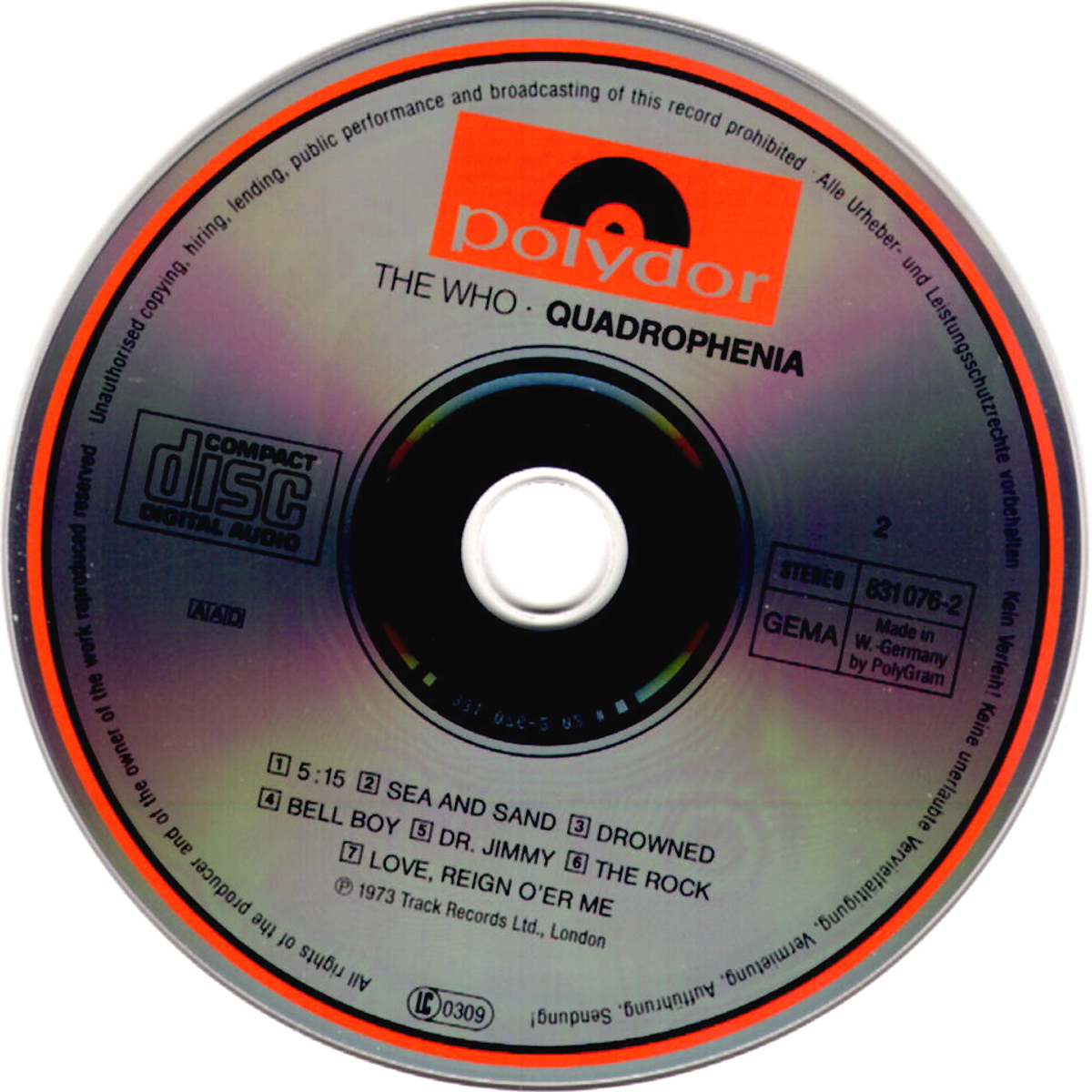
I don't remember who it was, to tell you the truth. There was an engineer that I think was all set to do the Quadrophenia album, an American. They lived in the same area, and they were both followers of Meher Baba. Because the whole way this came about is that Ronnie and Pete were good friends. The Who wanted to use Ronnie's mobile out at Stargroves, which was Mick Jagger's house out in the country, out near Stonehenge. And I built a studio for Ronnie Wood in his basement of his big mansion there in Richmond he was still then in the Faces. Over the course of the next two years I built a couple of studios for the guys in the Faces, one for Ronnie Lane, which became known as Lane's Mobile Sound, in an Airstream Trailer. So I got involved with Pete and got to meet him, and got involved with that company. The idea was to build studios for musicians. He started a company with Pete Townshend called Trackplan. I somehow got hooked up with this guy John Alcock, who was a fellow engineer-producer like me. So I went over to England and started working for peanuts, like I think 15 pounds a week or something, at Island Studios. They drove the truck! So I was getting tired of doing that. I'm blown out." 'Cause in those days, the sound mixers didn't travel with their briefcase with a band on a plane. He said, "Hey, if you want to get out of the touring thing".I said "Yeah, I'm thinking about it. But I was doing a tour with Traffic in 1969 or 1970, and I was talking to Chris Blackwell, who was the head of Island Records, and he offered me a job.

I started doing big tours as a sound mixer we call them "front of house mixers" now. RN: In the late '60s in Philadelphia, I was working for a sound company. Q: How did you get involved with the Who and Quadrophenia? He was interviewed extensively about his work with the Who on Quadrophenia in November 2009, for Richie Unterberger's book Won't Get Fooled Again: The Who From Lifehouse to Quadrophenia, available from Jawbone Press. He'd go on to engineer mid-1970s hit albums by British hard rockers Led Zeppelin, Bad Company, and Thin Lizzy, and then produce records by numerous artists, including the Babys, Eddie Money, Survivor, Chicago, Ozzy Osbourne, Meatloaf, Jefferson Starship, David Johansen, and Lynyrd Skynyrd. Ron Nevison, a young American who'd never worked on a major album before, was engineer for most of Quadrophenia's sessions. Yet though it had a somewhat mixed reception upon its release, in part because of the unavoidable comparisons to Tommy, Quadrophenia ultimately endured as one of the Who's most significant works. There were also attempts to make the album itself quadraphonic that couldn't come off, more due to the shortcomings of quadraphonic home equipment than the band's own capabilities. For a 1973 recording, it was complex, involving not just the band's usual power trio-plus-vocals format, but much in the way of synthesizers, horns, and sound effects. The recording of Quadrophenia was, like most of the Who's projects, fraught with lurches, calamities, and struggles to fit the limits of the era's technologies and market realities into Townshend's outsized conceptual ambitions. Nor was it absent of the ambivalent spiritual redemption found by the protagonist of Tommy, though the hero's journey toward it in Quadrophenia is more subtle.

Yet Quadrophenia was similar to Tommy, and much of what the Who had done back to 1965, in its focus on a misfit in search of identity, torn between a wish to fit in and untamed nonconformity.
#The who quadrophenia mod#
The journey of its protagonist through mid-1960s British mod culture was very much the same as the one the Who and their original audience had made, unglorified and speckled with frustration and failure. Where much of Tommy's story verged at points on fantasy fiction, Quadrophenia was an earthy excavation of the very roots of the Who's history. In some ways, Quadrophenia was quite different from Tommy. The other, Quadrophenia, was issued as a double album in fall 1973. One of them, Lifehouse, failed to reach completion, though its most commercial songs formed the bulk of their 1971 album Who's Next. The Who, and particularly their principal songwriter and visionary Pete Townshend, would also use the rock opera as a vehicle for two equally ambitious projects. Released in 1969, Tommy remains the most successful rock opera, and indeed one of the only rock operas to become both a commercial smash and an artistic triumph. In the early 1970's, the Who were in the difficult position of trying to follow up a massively successful album with something just as titanic, but different enough to maintain their position as innovators. Perfect Sound Forever: The Who's Quadrophenia- interview with engineer ROn Nevison The Who's Quadrophenia Ron Nevison Interview


 0 kommentar(er)
0 kommentar(er)
